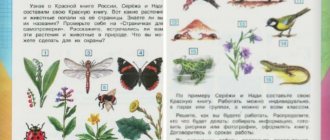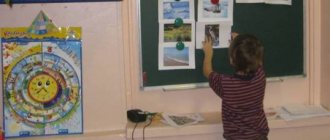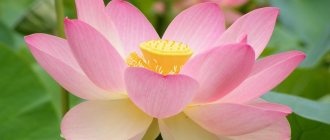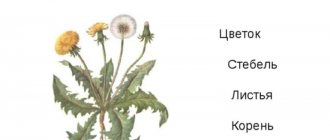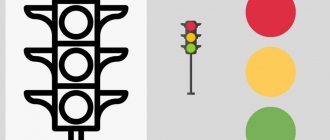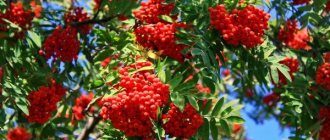Definition
Why is the Red Book needed and why was this color chosen? Red is a symbol of danger, threat. This book is the main document that contains materials about rare, endangered specimens of flora and fauna. On its basis, work is carried out to protect, preserve and reproduce endangered species.
If we open the Red Book, we will see multi-colored frames on the pages.
- Black color indicates that animals of this species are completely extinct on planet Earth (heather grouse, sea cow).
- The pages with red borders describe endangered species that are still found in nature and are in dire need of protection (blue whale, snowdrop).
- Those animals and plants whose numbers are currently declining are placed in a yellow frame. A little more and they will end up on the red pages (Amur tiger).
- In the white frames are creatures that live in a limited area, but there have always been few of them. For example, the hazel dormouse from Southern Europe.
- The gray boxes contain information about little-studied species that live in hard-to-reach places (the emperor penguin).
- Those animals and plants that were saved from extinction are moved to the green pages. Thanks to common efforts, their population has been restored.
Plants and animals listed in the Red Book of Khanty-Mansi Autonomous Okrug-Yugra
West Siberian river beaver
There are lumberjacks on the rivers, In silver-brown fur coats, They build strong dams from trees, branches, clay. (Beavers)
White-tailed eagle
Fog is spreading over the forests, the hills are enveloping and heading towards the swamps. The White-tailed Eagle is circling over the river in a hunting flight.
Tundra partridge
Ptarmigan The heather was blooming, and the hay was collected in stacks. Since dawn, the guys searched the meadows, Lowlands, swamps near and far, Until, finally, they found the partridge.
Siberian frog
The little animal is jumping, Not a mouth, but a trap. Both the mosquito and the fly will fall into the trap. (frog)
Siberian sturgeon
The body is like a spindle, The whole back is in its teeth, A sharp tail and head, There are cartilages, there are no bones!
Answer: Sturgeon
Saxifraga snow
The alpine hill is a complete breakdown, “saxifrage” flowers settled on it, they appeared from under the stones and immediately found their place on it.
White boletus
I am growing in a red cap Among the aspen roots, You will recognize me a mile away, My name is... (Boletus)
Common heather
Heather is an evergreen perennial low-growing flowering shrub. One species has several hundred varieties with different shades of small flowers - from white to purple
Why is it necessary to protect animals from the Red Book?
Mother Nature created many animals and plants on planet Earth. Each type performs its functions, maintaining the overall balance. However, due to human activity, many specimens are in danger. People are exploring new territories, building houses in place of forests, and hunting animals. All this leads to the complete disappearance of some species.
Passenger pigeons no longer fly in North America, the quagga no longer runs in Africa, and the baiji dolphin no longer swims in Chinese rivers. Right now the fate of some species of whales is being decided, of which there are literally only a couple left.
The disappearance of plants and animals inevitably leads to a disruption of the ecological balance. If one link of the food chain disappears, others gradually die out after it. Serious changes affect the entire ecosystem, including humans. While caring for nature, people simultaneously worry about their well-being.
For young ecologists
The Red Book was created for all inhabitants of the Earth. The publishing house "Rosman" released its children's version, designed for children of primary school age. The encyclopedia is beautifully illustrated and contains many educational stories about rare species of animals and plants.
Why do we need the Red Book for children? Firstly, it will expand the children’s understanding of flora and fauna. Secondly, it will teach you to treat nature with care and feel its beauty. Man has already caused irreparable damage to the planet. You can prevent an environmental disaster only by changing your attitude towards the world around you. A responsible type of thinking must be instilled in new generations from a very early age.
Creation of the Red Book
Environmentalists do not need to explain why the Red Book is needed. In the 20th century, industrial development led to dire consequences. Some regions are on the verge of environmental disaster. In 1948, the International Union for Conservation of Nature was created. Its goal was to coordinate the activities of all countries to correct the existing situation. A special commission was organized, which began to work on compiling a list of endangered species of animals and plants.
The work lasted 14 years. The first edition of the book was published in 1963. Commission Chairman Peter Scott suggested calling it “Red.” People associate this color with distress and an SOS signal. Initially, the publication looked like a thick desk calendar in two volumes. It was sent to environmental organizations, government agencies, and scientists. They were allowed to make edits. Any page of the book could be taken out and replaced with another.
Subsequent editions
The first Red Book listed only birds (312 species) and mammals (211 species). Over time, the information was clarified and refined. The second edition began publication in 1966. Scientists did not understand why the mass reader needed the Red Book, so it was impossible to find it in a regular store. The work was distributed among ecologists and specialized specialists.
In 1972, volumes of the third edition began to be published. Each species was described in detail, its habitat, abundance and other characteristics were indicated. The last edition of the book was published in 2012. It includes a list of 63,837 species. 19,817 of them are in serious danger.
RESEARCH WORK Lego project “Red Book. Animals” project on the surrounding world
RESEARCH
Lego project
"Red Book. Animals"
- Lego animals
- Lapbooks
- Conclusion
- Bibliography
Introduction
During our environmental studies, we became acquainted with the diversity of the animal world of our planet. For many thousands of years, man has explored all corners of the Earth. We build big cities, roads, and mine mineral resources.
At the same time, we do not spare the natural world: we cut down forests, dig deep ditches, litter rivers and lakes, mercilessly catch fish, and shoot animals. Nature is hard to bear the wounds inflicted on it by man. And asks for help and protection from a person.
The purpose of our work:
- Find out which objects are included in the Red Book.
- Find out why the pages of the Red Book are different colors.
- What measures can we take to preserve the number of animals?
Tasks:
- Find information from various sources.
- Determine the animals whose figures we will make using Lego sets.
- Create “Animals” laptops
- Conduct a survey of classmates to find out if they know about the Red Book, what species of animals are included in it and how to preserve endangered species.
Theoretical part
In the course of our work, we found out that: a special commission of the rescue service compiled a world list, which included animals and plants that were on the verge of extinction, and rare species. They decided to call this list the Red Book. The Red Book was established by the International Union for Conservation of Nature in 1966. It is stored in Switzerland, in the city of Morche. It contains data on birds, fish, animals, plants that urgently need protection. Red color signals: protect!
Many countries today compile their own Red Data Books. A similar book was created in Russia in 1974. Her lists included 52 species of animals and 65 species of birds. The list has been growing since then.
The pages of the Red Book are multi-colored. This is not for decoration. Therefore, on the page of which color the information about a given animal is contained, you can immediately determine in what position it is located
- - black pages
- - red pages
- - yellow Pages
- - gray pages
- - white pages
- - green pages
- The black pages contain those animals that we will never see again, such as the Passenger Pigeon.
The passenger pigeon is a very beautiful bird. These birds lived in old deciduous forests, where they found abundant food: beech nuts, chestnuts, acorns, and seeds. The habit of keeping in flocks, building nests and being in close proximity has turned them into easy prey for hunters. By 1890, wild passenger pigeons had become rare, and not surprisingly. The last passenger pigeon died in 1900.
- Particularly rare and endangered animals are recorded on the red pages. There are few of them, but you can still find them. They may disappear completely. They give people SOS signals. People! Be carefull. The red pages list plants, birds and animals that may soon become extinct.
For example: red wolf, snow leopard, Amur tiger
- My page is yellow. They symbolize the number of animals, which is rapidly decreasing. If we don't help them, they may end up on dangerous red pages.
For example: pink flamingo, polar bears, pink gull, gazelle, Egyptian heron.
- The green pages record animals that have been saved from extinction. Animals are bred in captivity to return them to their natural habitats. Animals must learn to survive in new conditions. There are currently more than 1,200 national parks in the world. National parks prevent soil erosion, conserve water resources and conserve medicinal plant resources. Nature reserves are created in order to preserve natural areas with their characteristic species of animals and plants in their natural state.
For example: elk, river beaver, bison.
- The gray pages contain the names of animals that are still little studied. Their habitats are difficult to access or not clearly established.
For example: Turtle, Emperor Penguin, White-faced Dolphin.
- The white pages are those animals that have always been few and far between. The pages contain specially protected natural areas. These are national parks and reserves. And also, animals that are still little studied or there is no accurate information about their condition. Back in the 19th century, people began to notice that some valuable plants and animals were becoming rare and even ceased to exist. It was in this regard that reserves began to be created, the task of which was to protect rare plants and animals from destruction. Nature reserves are islands of salvation for animals. On the territory of nature reserves in strict protection zones, all economic activities and any human interference in the natural state of nature are prohibited.
For example: Sika deer
Practical part.
Based on what we learned, we decided to interview our classmates. We wanted to know if they knew about the existence of the Red Book, any animals listed in it, and also how, in their opinion, the number of endangered and rare animals could be reduced.
During the survey, we found out that not all the children know what the Red Book is, they named few animals included in it, such as: Amur tiger, polar bear, mandarin duck, bison, panda, white crane, red wolf, Egyptian Heron, Snow Leopard, Sika Deer, Beavers and many others.
Lego animals
We decided to make some of the animals from Lego parts and turned to the teacher for help. She found us diagrams for assembling such animals. This is what we got.
In addition, the majority of respondents believe that the following measures must be taken to preserve endangered animal species:
- Create nature reserves
- Do not hunt or kill animals,
- fight poachers,
- restore endangered animal species,
- make feeders,
- The most important thing is to protect nature!
Lepbook
Together with my parents, we made a laptop about our animal. We looked for all the facts, information and data at home ourselves. Of course, with the help of adults. Our mothers wrote three or four words for each item, and we drew pictures instead of answers. And we got our own mini-encyclopedias about the animal.
So, what goes into our animal lapbooks?
1. The “Interesting Facts” pocket is used to store cards with collected facts about the animal.
2. Mini-book “Image in Art” - riddles, proverbs, titles of books and films about the animal being studied are collected here.
3. “Protection” strip - the protective status of the animal, the factors threatening it, and the measures that are taken to protect it are recorded.
4. Frame “Photo of an animal” - here we placed an image of the animal we have chosen (its photograph or drawing).
5. Fields for recording classification - our mothers wrote down basic information about animals (class, order, family, genus, species) in the appropriate boxes.
6. Strip “Appearance” - the distinctive features of the animal and its main characteristics are described.
7. Notebook “Lifestyle” - we entered basic information about the habits and behavior of the animal.
8. Map “Where does he live?” — on the contour map we marked the habitat of the animal.
9. Mini-book “Dwelling” - mothers wrote down basic information about the animal’s home, and we drew its habitats (dens, nests, burrows, etc.).
Conclusion
We realized that everyone is not indifferent to this problem and wants to join our project. We decided to continue working on our project further. In the future we plan to make our own Red Lego book. With our project we wanted to show that there are animals near us that need our protection. To do this, every person needs to learn to treat them with care. During the work on the project, all goals and objectives were achieved. The creation of the Red Book is the first step in the fight for the conservation of animals and plants that are in danger of extinction.
We love the forest at any time of the year.
We hear the rivers speaking slowly...
All this is called nature,
Let's take care of her!
Let's lead by example
Modern education assigns an important place to environmental education of children. Work in this direction is being carried out starting from kindergarten. However, lessons alone are not enough. Perhaps your child can explain why nature reserves and the Red Book are needed. But did he fully feel his responsibility for the world around him?
Go together to the nearest nature reserve to see rare animals with your own eyes. Find out more about them. Some parks welcome volunteer help. If possible, take part in planting trees or cleaning up trash. Teach your child to throw waste in the trash can. Make feeders in winter. Try not to harm the environment. Don't pick flowers or catch insects. Admire, observe, photograph and study.
Why is the Red Book needed? It reminds us that the world around us is fragile. Rash actions can lead to disastrous consequences that cannot always be corrected. The task of man is to preserve the planet in all its diversity and pass it on to descendants. The survival of not only rare species, but also of you and me depends on this.
The Red Book of Russia
Humanity has realized relatively recently why we need to take care of our habitat. Work to protect endangered species is being carried out today in almost all countries. They are creating their own Red Books. There is one like this in our country. Its first edition was published in the USSR in 1978 and consisted of two volumes. One of them was dedicated to animals, the other to plants.
In Russia, the Red Book was first published in 2001. All species listed in it are automatically protected by law. Their extraction is prohibited. In 2021, a new, revised edition was approved. The Amur tiger, Przewalski's horse, red wolf, saiga, snow leopard, bison, etc. were added to the list of protected animals.
Measures to protect endangered species
Each country is engaged in the protection of rare animals and plants located on its territory. Russia was no exception. We have created more than one and a half hundred nature reserves, more than a thousand nature reserves, and national parks.
Let's consider the main measures designed to increase the population size:
- ban on hunting, damage, and snatching of endangered specimens;
- the creation of nature reserves and reserves where nature is preserved in its original form;
- planting rare plants in botanical gardens and collection areas to create a reserve;
- breeding endangered animals in captivity and then releasing them into their natural habitat;
- resettlement of individuals in the territories where they lived before the arrival of humans;
- creating favorable conditions for living, constructing nests, shelters, feeders in winter.
